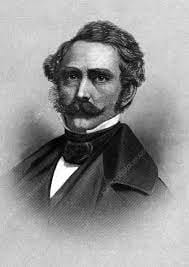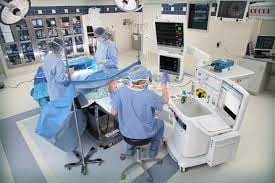What is the difference between the past and history? I seemed to think very little of these two words in comparison to one another until we started our newest unit called… The Manhattan Project! Basically, the past is anything that has ever happened, ever! I really mean things like someone sleeping or brushing their teeth. Sounds quite small compared to the invention of time or electricity. But that’s where history comes in. History is something notable, widespread, and symbolic. It has the ability to shape a large group and can be well known around the world. There can be many debates on history and the interpretations of history are often different amongst others. Like the common question, “if a tree falls in the forest and no one is there, did it really happen?”
 After learning about different events in history and what makes them important I decided to learn about the history of anesthesia. Pain is a common experience the entirety of humans share. We have many different ways to relieve pain and continue to do research on the best ways to relieve pain while having the least negative effects on the body. I was very curious about how anesthesia works as it is shared in hospitals and available for many people if it is needed all over the world. It is interesting how it can induce sleep and cause a numbness over the body, but still allow basic function and has the ability to be easily reversed.
After learning about different events in history and what makes them important I decided to learn about the history of anesthesia. Pain is a common experience the entirety of humans share. We have many different ways to relieve pain and continue to do research on the best ways to relieve pain while having the least negative effects on the body. I was very curious about how anesthesia works as it is shared in hospitals and available for many people if it is needed all over the world. It is interesting how it can induce sleep and cause a numbness over the body, but still allow basic function and has the ability to be easily reversed.
There are three main categories of anesthesia for pain relief. General, which takes over the entire body and mind, local anesthetic which causes relief in a very small area, and regional which provides loss of sensation to a major part of the body while still allowing your mind to be awake. Before anesthesia was invented in 1846 people would go through surgeries and medical procedures having to endure tremendous amounts of pain. These were very life threatening and caused a great amount of stress on the body. The thought of being a surgeon or a doctor and having to watch patients suffer is unimaginable during the era before anesthesia.
 When anesthesia was used for the first time by young Boston dentist William Morton in collaboration with the great John Warren history was made. Maybe not right there and then but I think they must if had some sort of gut feeling they had a big impact when their patient stayed pain free and under during the procedure. Morten used a gas called ether that when inhaled through an endotracheal tube it puts patients under. After this discovery the art of anesthesia was continuously developed by scientists, doctors, dentists, and anesthesiologists all over the world. Without the historical development surgery, pain management, and procedures would not be what they are today.
When anesthesia was used for the first time by young Boston dentist William Morton in collaboration with the great John Warren history was made. Maybe not right there and then but I think they must if had some sort of gut feeling they had a big impact when their patient stayed pain free and under during the procedure. Morten used a gas called ether that when inhaled through an endotracheal tube it puts patients under. After this discovery the art of anesthesia was continuously developed by scientists, doctors, dentists, and anesthesiologists all over the world. Without the historical development surgery, pain management, and procedures would not be what they are today.
 Modern anesthesia has been developed and we have a better ability to monitor the patient today to make adjustments. Anesthesiologists today generally have a work station consisting of everything they need to monitor the patients and inhibit the medication. The modern anesthesia workstation consists of gas delivery and scavenging, vaporizers, electronic flow meters, the ventilator, and the monitors. We also have to ability to use low flow or closed loop delivery. The ability and the technology to monitor patients has made surgery much easier, the recovery shorter, and the stress of pain tolerable.
Modern anesthesia has been developed and we have a better ability to monitor the patient today to make adjustments. Anesthesiologists today generally have a work station consisting of everything they need to monitor the patients and inhibit the medication. The modern anesthesia workstation consists of gas delivery and scavenging, vaporizers, electronic flow meters, the ventilator, and the monitors. We also have to ability to use low flow or closed loop delivery. The ability and the technology to monitor patients has made surgery much easier, the recovery shorter, and the stress of pain tolerable.
Although we have now been using anesthesia for a significant amount of time we have not been able to fully understand its entire effect on the body. Through much discovery and research off of hypotheses we understand that local anesthetic blocks nerve transmission to pain centres in the central nervous system. General Anesthesia is more complicated as it blocks all pain receptors, induces sleep in a coma like state, and still allows the body to maintain homeostasis. Like then ability to manage blood pressure, temperature, and breathing.
The lipid hypothesis is based on “the disruption of heterogeneous clusters of lipids called lipid rafts. This triggers the opening of ion channels and ultimately stops the neutron from firing.” As we know the dosage of anesthetics is related to their solubility in lipids the medical mysteries are able to unravel more. To experiment, Dr, Lerner used fruit flies, cell studies, and nanoscale microscopy to model cells under different mediums. The first was chloroform that used to be used as an anaesthetic and saw that it caused the cells to pack tightly together. This is just one way of modelling the effect of anesthetics on cells. Since we are still learning about how to human brain functions and how the puzzle pieces fit together it is complicated to try and understand the concept of anesthesiology and the impact it has on the human brain. With further research and new technology we are getting closer to the last piece and having the ability for fully understand the cell process and the impact of each individuals body.